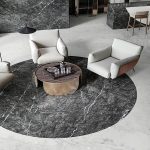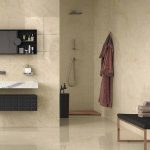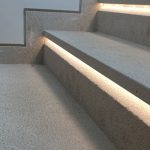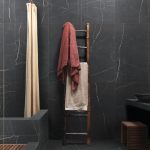Marble versus Travertine: Differences, Benefits, and Uses

Marble versus Travertine: Differences, Benefits, and Uses
Marble versus travertine, differences, benefits and uses are to be discussed here. Stay with us.
Travertine Sold as Marble
Travertine is sometimes sold as marble, but marble is actually quite a different product than travertine, even though they are both a type of limestone. They each have their own unique character that are suitable to different remodeling projects. If someone asks you whether they should use marble versus travertine tile, you should ask about how they will use the material and tell them how they differ to give them a good idea of what to expect when making a decision to use travertine or marble.
Right Setting for Marble and Travertine
In the right setting, either of these two natural stones can be excellent choices. They will bring elegance and charm to your home or business, as long as you know what to expect from each. Here are the most important factors to consider when making the right choice.
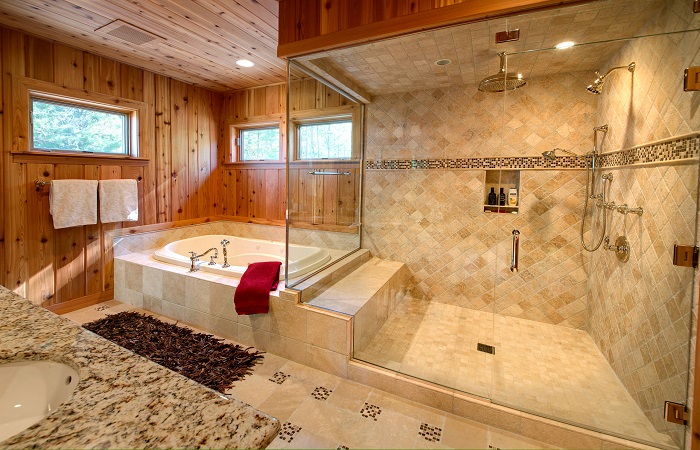
Marble versus Travertine Cost
Travertine costs about half of what marble costs and thus is a good choice for very large projects, where the cost of marble might be prohibitive. Marble tiles can be used for accents in walls and floors and combined with other types of tiles too, if cost is an issue. When price is no object, then marble can make a stunning impression in large estate sitting areas like this one, or like in the lobby of a fine hotel Otherwise, homeowners may find they prefer marble for a narrow hallway bathroom entrance or on a fireplace surround, where the use is distinctive but not too exorbitant in cost
Location as the Most Important Factor
To borrow a saying from real estate, location, location, location can often dictate what stone you should use when it comes to travertine vs. marble tile. Travertine is a porous stone that can be sealed or not sealed, depending on whether you want it to absorb water or give it a more polished finished, like this travertine kitchen floor. Marble, on the other hand, is always sealed. Thus, if you have a location outside, like a pool area, travertine is the outstanding choice instead of the more delicate marble. Marble will scratch outside. Most people use marble only inside their homes and businesses, not outside where it is subject to the elements.
Marble versus Travertine Look and Feel
Let’s face it, marble has the ultimate luxurious look and feel. Those beautiful veins are striking in stone backgrounds that can range from cool blues, to warm gold and beige tones. There are also some that are multi-toned. There is a much wider range of colors possible with marble than with travertine. But it doesn’t mean you have to choose marble. Travertine comes in soft beige, white, cream, and gold. Travertine also can be a good choice when you want a warmer palette or a rougher finish. However, marble also has it’s own unique feel that is prized for keeping cool and smooth, which works well in bathrooms and patios.
Considering of Durability Notion
Travertine and marble chips and scratches can be repaired by filling them in, if they even happen. Both stones may end up needing touch-ups over time, but surprisingly, travertine ends up being the more durable of the two. Both stones are porous, but travertine is more porous than marble and can be used without being sealed in outside areas where you don’t want to slip around from standing water on the stone. However, both stones can be sealed to keep them from being stained by liquids, like wine or soy sauce or even bathroom cleaning products, if used in the kitchen or bathroom.
How to Maintain and Care for Your Stonework
Both travertine and marble are vulnerable to acidic liquids in the kitchen, which can etch as well as stain the surface. When cleaning them avoid harsh chemicals and use soap and water only. Sealing them once or twice a year can help to keep them in good shape. But proper care and maintenance is important when using stone in your home or business. Spills need to be wiped up immediately. For this reason, both marble and travertine are used on backsplashes, floors, and walls, more often than on countertops. If used on countertops, it will need to be sealed and kept out of direct sunlight.
Darker Marble Types
Some of these precautions aren’t as important if you use a darker marble. Like when we use marble on a countertop in a business like a bar, where direct sunlight is not an issue. The darker tile and veining will hide some stains, should you end up with them. Again, the proper usage of stone in the proper setting is what creates the best applications.
Travertine versus Marble: Differences, Benefits, and Uses
Travertine works well both inside and outside, whereas marble tends to be used indoors. The range of colors is larger with marble, but travertine can be used for warmer palettes. Both stones need proper maintenance, but veining in darker marbles can hide imperfections that occur over time. Each stone has a different look and feel. Each one is suitable for different applications and tastes. However travertine costs about half of what marble costs. It doesn’t mean it’s any less durable, though.
Summing Up
With the proper maintenance, environment, and choice of color, you can even use both these stones in areas that are damp or high traffic areas. Although there may be some wear and tear over time, which can be repaired by a professional. Both marble and travertine have extensive histories being used in classical artwork and interior design. Whichever material you opt for, you’re guaranteed to have an interior that can evoke a sense of grandeur and luxury, be that in the architecture, flooring, or in the furnishings such as tables and countertops.
To learn more about us, click here.
Send your price quotes directly to our WhatsApp through this Link: https://wa.link/ord5k8
Sources
artsaics.com/travertine-vs-marble-tile/#:~:text=Both%20stones%20may%20end%20up,standing%20water%20on%20the%20stone.\
www.vinterior.co/blog/inspiration/style-guide/travertine-vs-marble-which-should-you-choose/
- Back To Articles
- armani grey marble, armany grey, comparing marble and travertine, grey Armany, marble, marble apperance, marble applications, marble charecteristics, marble features, marble properties, marble stone, marble uses, marble vs travertine, Pietra Grey Marble, Pietra Grey Marble Tiles, travertine, travertine appearance, travertine applications, travertine features, travertine properties, travertine stone, travertine uses, travertine vs. marble
Article
Natural Stone Applications
- 22 December 2022
Iranian Stones Introduction According to Source and Quarry
- 21 December 2022
Technical Stone Introduction and Quarrying Procedures
- 21 December 2022
Categories
- blog757
- news1
- Specialized articles756




